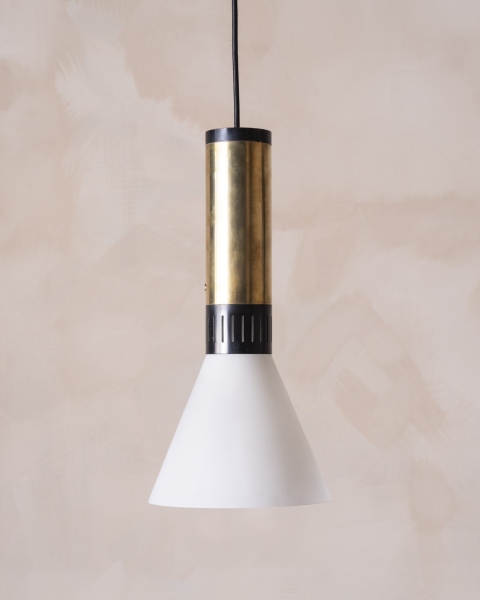Stilnovo
Stilnovo (Est. 1946)
Founded in 1946 by Bruno Gatta, Stilnovo played a significant part of the first wave of post-World War II Italian design, specializing in modern, innovative, functional lighting.
Over the years Stilnovo employed a number of Italy’s leading designers, including Danilo and Corrado Aroldi, Gaetano Sciolari, Alberto Fraser, Joe Colombo, and Ettore Sottsass. A contemporary of companies such as Fontana Arte and Arteluce, Stilnovo rose to prominence on the back of Italian design’s move away from small family oriented businesses to forming companies capable of producing industrialized, mass produced work.
Stilnovo flourished in an era of experimentation, coming at a time when the idea of function was reevaluated in light of new materials and novel forms. Their creations were of mid-century Italy, where the neo-realism movement tussled with the philosophy of organicism, and where architects borrowed from, subverted, and discarded the artisan based craft-art that had for centuries been Italy’s dominant creative force.
Founded in 1946 by Bruno Gatta, Stilnovo played a significant part of the first wave of post-World War II Italian design, specializing in modern, innovative, functional lighting.
Over the years Stilnovo employed a number of Italy’s leading designers, including Danilo and Corrado Aroldi, Gaetano Sciolari, Alberto Fraser, Joe Colombo, and Ettore Sottsass. A contemporary of companies such as Fontana Arte and Arteluce, Stilnovo rose to prominence on the back of Italian design’s move away from small family oriented businesses to forming companies capable of producing industrialized, mass produced work.
Stilnovo flourished in an era of experimentation, coming at a time when the idea of function was reevaluated in light of new materials and novel forms. Their creations were of mid-century Italy, where the neo-realism movement tussled with the philosophy of organicism, and where architects borrowed from, subverted, and discarded the artisan based craft-art that had for centuries been Italy’s dominant creative force.




